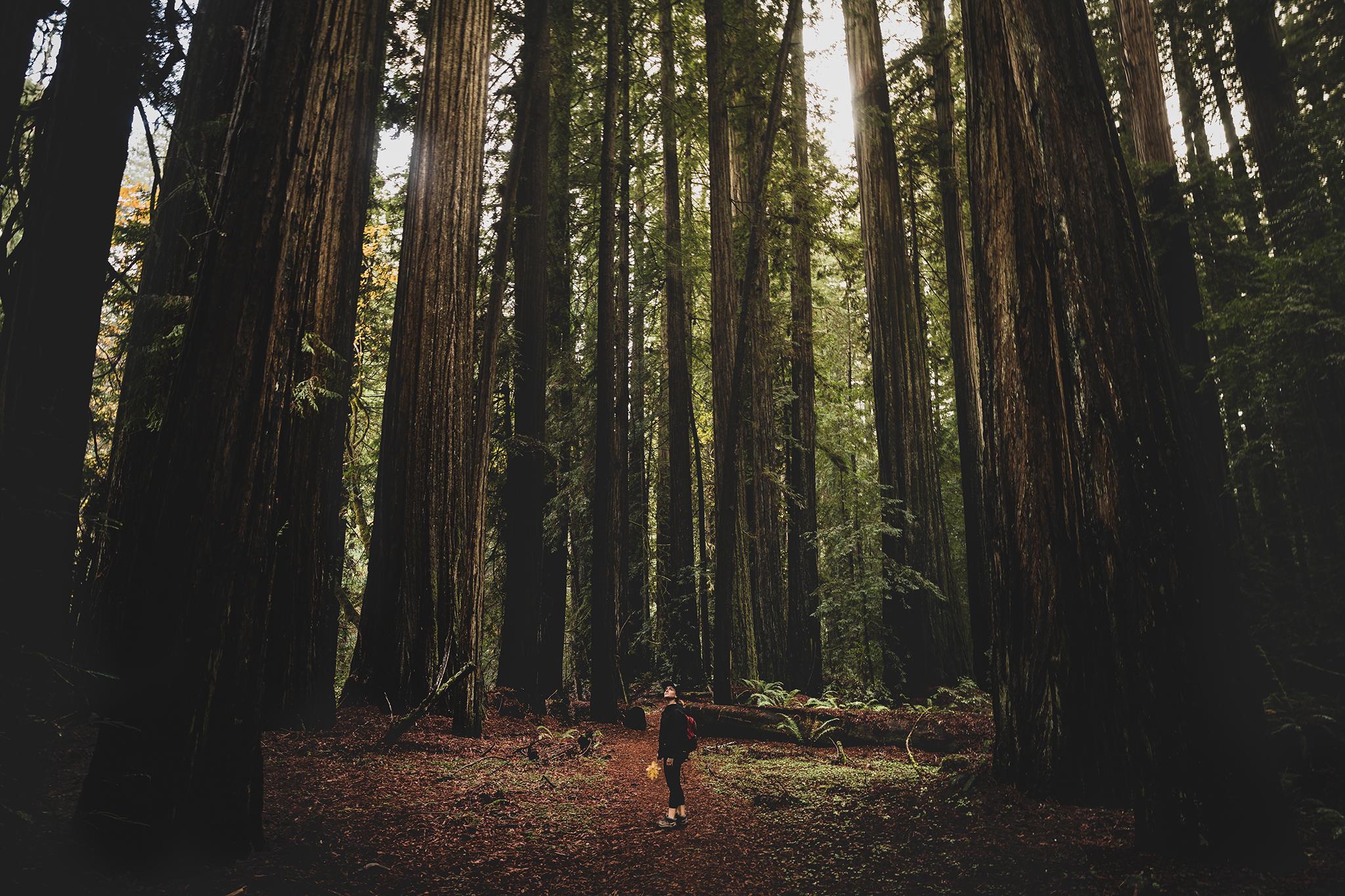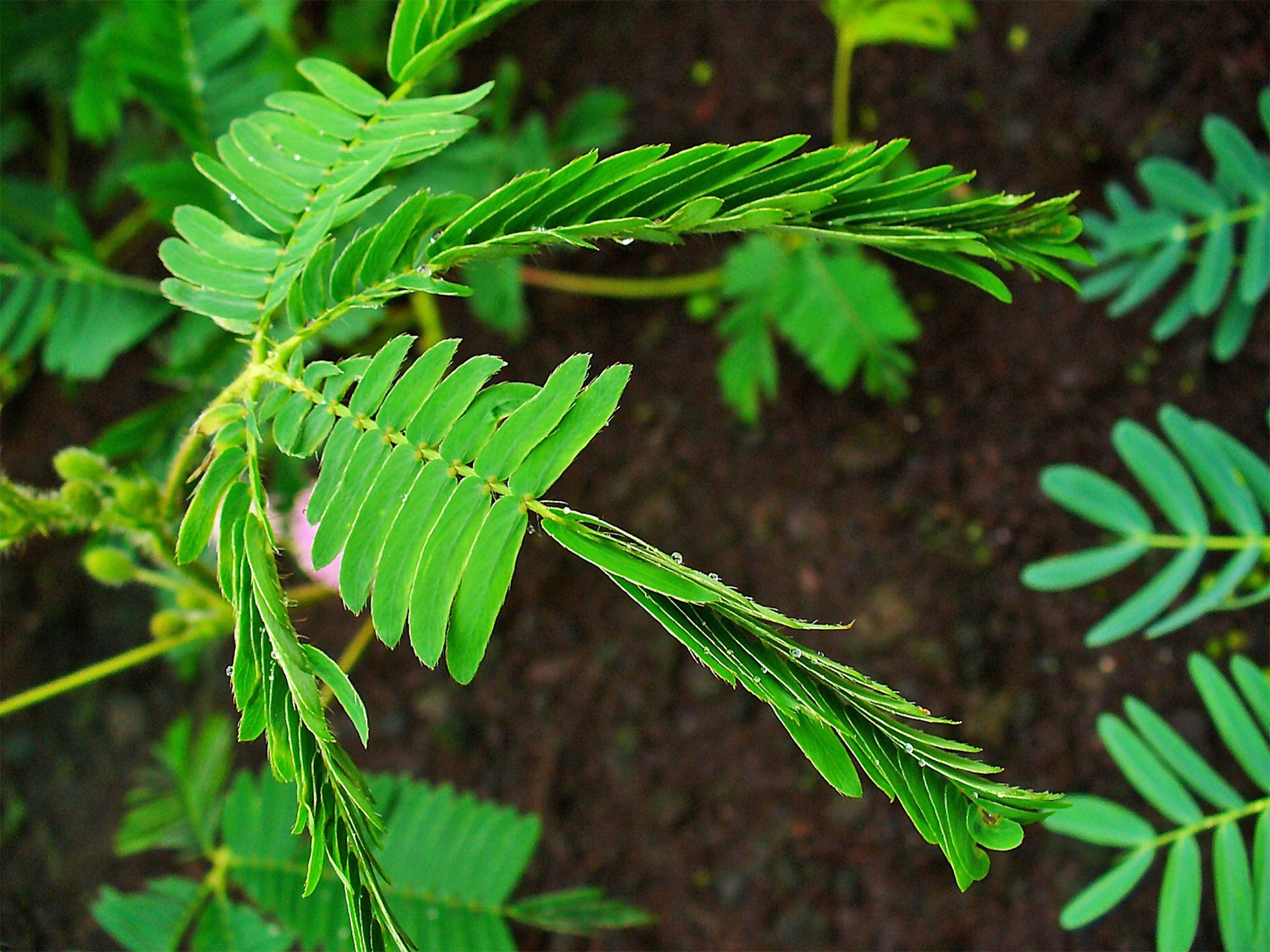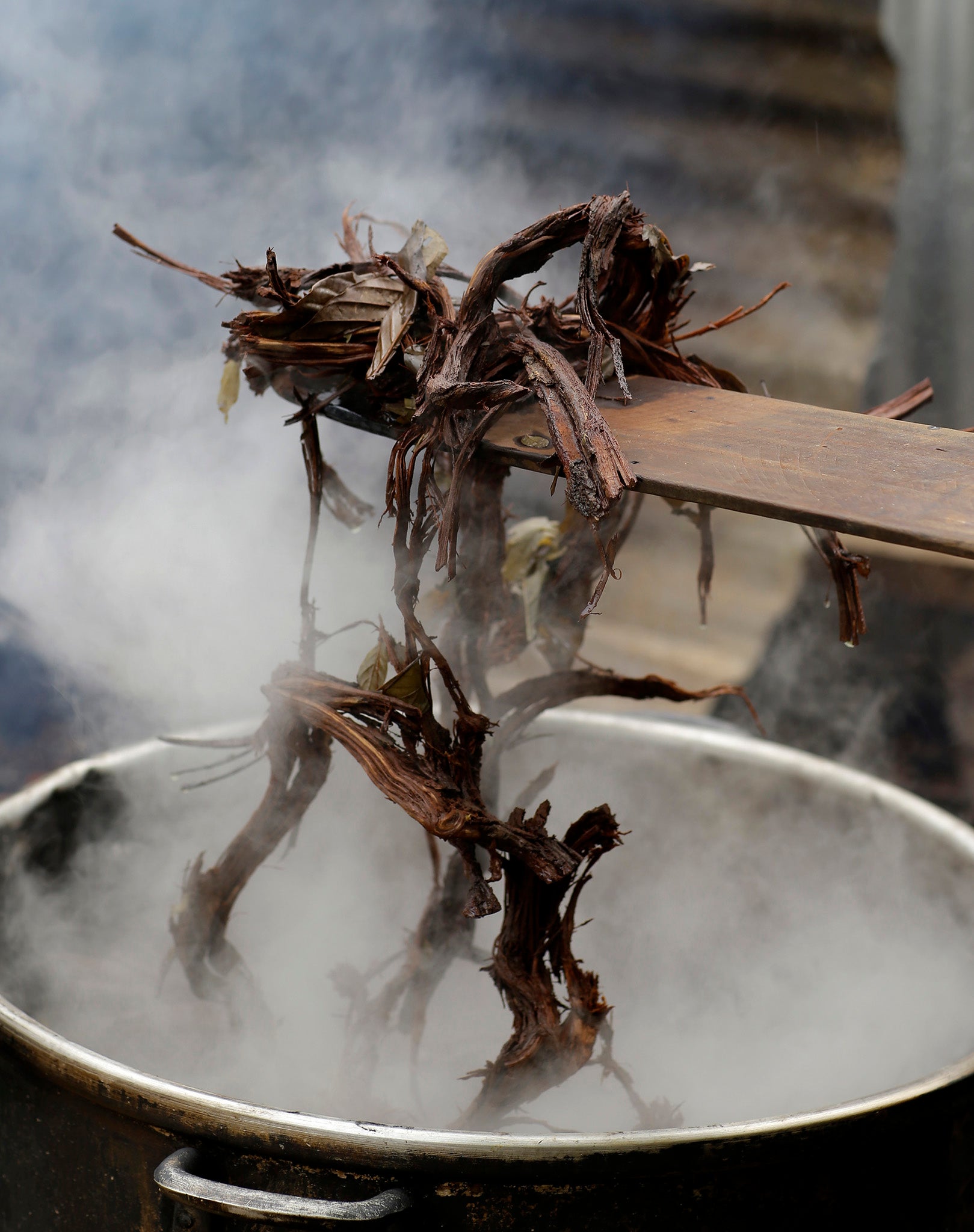The scientist who ‘speaks to plants’ to help stop climate change
Monica Gagliano started hearing plants after sipping on an ancient Amazonian tea. This might sound farfetched, writes Ellie Shechet, but many scientists agree that in order to save the planet, we have to understand our natural world

Your support helps us to tell the story
From reproductive rights to climate change to Big Tech, The Independent is on the ground when the story is developing. Whether it's investigating the financials of Elon Musk's pro-Trump PAC or producing our latest documentary, 'The A Word', which shines a light on the American women fighting for reproductive rights, we know how important it is to parse out the facts from the messaging.
At such a critical moment in US history, we need reporters on the ground. Your donation allows us to keep sending journalists to speak to both sides of the story.
The Independent is trusted by Americans across the entire political spectrum. And unlike many other quality news outlets, we choose not to lock Americans out of our reporting and analysis with paywalls. We believe quality journalism should be available to everyone, paid for by those who can afford it.
Your support makes all the difference.Monica Gagliano says that she has received Yoda-like advice from trees and shrubbery. She recalls being rocked like a baby by the spirit of a fern. She has ridden on the back of an invisible bear conjured by an osha root. She once accidentally bent space and time while playing the ocarina, an ancient wind instrument, in a redwood forest. “Oryngham,” she says, means “thank you” in plant language. These interactions have taken place in dreams, visions, songs and telekinetic interactions, sometimes with the help of shamans or ayahuasca.
This has all gone on around the same time as Gagliano’s scientific research, which has broken boundaries in the field of plant behaviour and signalling. Currently at the University of Sydney in Australia, she has published a number of studies that support the view that plants are, to some extent, intelligent. Her experiments suggest that they can learn behaviours and remember them. Her work also suggests that plants can “hear” running water and even produce clicking noises, perhaps to communicate.
Plants have directly shaped her experiments and career path. In 2012, she says, an oak tree assured her that a risky grant application – proposing research on sound communication in plants – would be successful. “You are here to tell our stories,” the tree told her.
“These experiences are not like, ‘Oh you’re a weirdo, this is happening just to you,’” Gagliano says. Learning from plants, she says, is a long-documented ceremonial practice (if not one typically endorsed by scientists).
“This is part of the repertoire of human experiences,” she says. “We’ve been doing this forever and ever, and are still doing this.”
Gagliano knows that these claims, based on subjective experiences and not scientific evidence, can easily be read as delusional. She also knows that this could damage her scientific career – plant scientists in particular really hate this sort of thing. Back in 1973, an explosively popular book, The Secret Life of Plants, made pseudoscientific claims about plants, including that they enjoy classical music and can read human minds. The book was firmly discredited, but the maelstrom made many institutions and researchers reasonably wary of bold statements about botanical aptitude.
Regardless, last year Gagliano published a heady and meandering memoir about the conversations with plants that inspired her peer-reviewed work, titled Thus Spoke the Plant. She believes, like many scientists and environmentalists do, that in order to save the planet we have to understand ourselves as part of the natural world.
It’s just that she also believes the plants themselves can speak to this point.
“I want people to realise that the world is full of magic, but not as something only some people can do, or something that is outside of this world,” she says. “No, it’s all here.”
As environmental collapse looms, we’ve never known so much about life on earth – how extraordinary and intricate it all is, and how loose the boundary where “it” ends and “we” begin.
Language, for example, doesn’t seem to be limited to humans. Prairie dogs use adjectives (lots of them) and Alston’s singing mice, a species found in Central America, chirp “politely”. Ravens have demonstrated advanced planning, another blow to human exceptionalism, by bartering for food and selecting the best tools for future use.
The list goes on. Leaf-cutter ants not only invented farming a couple of million years before we did, but they also have their own landfills – and binmen. Even slime moulds can be said to make “decisions” and are so good at determining the most efficient route between resources that researchers have suggested we use them to help design highways.
But it may be plants whose capacities are the most head-rattling, if only because we tend to view them as decor. Plants can do a lot of things we cannot. Trees can clone themselves into 80,000-year-old superorganisms. Corn can summon wasps to attack caterpillars. But research suggests we also have some things in common. Plants share nutrients and recognise kin. They communicate with each other. They can count. They can feel you touching them.
So we know that plants respond to their environments in sophisticated, complex ways – “far more complex than most of us realised a few years ago”, says Ted Farmer, a botanist at University of Lausanne in Switzerland and one of the first to defend the concept of inter-plant communication.
Farmer is among those still “very” uncomfortable describing plants, which lack neurons, as “intelligent”. But now it’s “consciousness” – another word without a firm definition – that’s really raising hackles in the scientific community.
A group of biologists published a paper this in July with the matter-of-fact title “Plants Neither Possess Nor Require Consciousness”. The authors warned against anthropomorphism, and argued that proponents of plant consciousness have “consistently glossed over” the unique capacities of the brain. Though her book went unremarked upon, Gagliano’s experiments and statements ascribing feelings and subjectivity to plants were among those critiqued, and she was categorised witheringly within “a new wave of Romantic biology”.
Versions of this debate have been simmering for years. In 2013, Michael Pollan wrote about Gagliano presenting the results of an experiment to an incredulous audience.
That study is probably her most widely known. In it, she sought to discover whether plants, like animals, could demonstrate a basic type of learning called “habituation”.
The Mimosa pudica – you may know it as the “sensitive plant” – contracts its leaves when touched. So, in the experiment, potted mimosas were dropped a few harmless inches onto foam. At first, the leaves closed up immediately. But over time, they stopped reacting.
It was not that they were fatigued, Gagliano wrote, because, when the pots were shaken, the leaves closed up again. And when the dropping test was repeated a month later, their leaves remained unruffled.
The plants had “learned” that the drop was not a threat, Gagliano argued. The plants remembered.
And subsequent research has suggested that plants may indeed be capable of some type of memory. But Gagliano’s conclusion didn’t go over well at the time. Her framing of the data didn’t help. She insists that she doesn’t use metaphors in her work, and that “learning” is the best description we have for what took place, even if we don’t know how the plants are doing it.
This experiment was “a remarkable piece of work”, Pollan says. “Humans do tend to underestimate plants, and she’s one of a small group of scientists who are trying to change that story.”
Dr Heidi Appel, a scientist who found that rock cress produce more defensive chemicals when exposed to the stressful sound of a caterpillar chewing, says: “Monica is a brilliant young woman, and she’s been a major idea generator in the field of plant sensory biology. We’re investigating things I don’t think we would have otherwise.”

But, in Gagliano’s memoir, Appel says, “there’s a commingling of science and spiritual experiences that I feel are best disentangled”.
Pollan says: “I think it’s important to separate out what you can prove and what might be true in a more subjective way. And I don’t know where you draw the line, exactly.”
I meet Gagliano at an outdoor cafe in San Francisco, next to a pot filled with bright, chubby succulents. I find myself watching it, wondering if its inhabitants are aware that we are debating their awareness.
Gagliano grew up in northern Italy and is a marine ecologist by training. She spent her early career studying ambon damselfish at the Great Barrier Reef.
After months underwater observing the little fish, Gagliano says she started to suspect that they understood a lot more than she had thought – including that she was going to dissect them. A professional crisis ensued.
Maybe we should admit that we hardly understand who we are, we hardly understand where we are at, we know very little compared to what there is to know. To be open to explore and learn, I think that is the sign of wisdom, not of madness
Plants were inching their way into her life. As Gagliano tells it, she had been volunteering at an herbalist’s clinic, and had begun using ayahuasca, a hallucinogenic brew that induces visions and emotional insights (and often nausea). She says that one day, sober, she was walking around her garden and heard, in her head, a plant suggest that she start studying plants.
In 2010, she travelled to Peru for the first time to work with a plant shaman called Don M.
To communicate with plants, Gagliano followed the dieta, or the shamanic method in the indigenous Amazonian tradition by which a human establishes a dialogue with a plant. The rules can vary, but it usually involves following a diet (no salt, alcohol, sugar or sex; some animal products may also be prohibited, depending on the culture) and drinking a plant concoction (sometimes hallucinogenic, sometimes not) in isolation for days, weeks or months. An icaro, or medicine song, is said to be shared by the plant, as well as visions and dreams, and the plant’s healing knowledge becomes a part of the human. It’s not fun, she warns.
Gagliano worked with multiple plant shamans, or vegetalistas, in Peru. There she bathed in the foul-smelling pulp of an ayahuma tree, which then designed a scientific experiment for her, instructing her to “train young plants in a maze and give them freedom of choice.” The ayahuma also helped her diagram a 2017 study investigating pea plants’ use of sound to detect water.
In the memoir, she wrote that she also travelled to California to work with a healthcare professional who conducts vision quest ceremonies (that’s when the oak tree spoke to her). She visited “the diviner,” a man trained by the Dagara people of Ghana and Burkina Faso to channel nature spirits.

At a certain point, Gagliano began going solo, “working with” plants like basil in her own veggie patch.
“Did you ever wonder if you were going insane?” I ask.
“Absolutely,” she says, and laughs. “I still do.” But she believes she should be free to talk openly about these experiences.
“Maybe we should admit that we hardly understand who we are, we hardly understand where we are at, we know very little compared to what there is to know,” she says. “To be open to explore and learn, I think that is the sign of wisdom, not of madness. And maybe wisdom and madness do look very similar, at some point.”
As a white woman on a journey through sampled bits of sacred rituals, Gagliano speaks thoughtfully and often about the legacies of colonialism, capitalism and exploitative New Age trends, which certainly includes the rise in ayahuasca retreats. A term like “shaman” can now bring to mind its plunder by an unpopular modern archetype – the personal-growth-obsessed wellness devotee, dreamily trailing sage in circles around her unvaccinated children.
But Gagliano’s journey, her supporters say, is rooted in a desire to challenge dominant assumptions.
“I have been working with the idea of plant intelligence for many years,” says Luis Eduardo Luna, an anthropologist and ayahuasca researcher in Brazil who has collaborated with Gagliano. Back in 1984, he published a paper in the Journal of Ethnopharmacology detailing the concept of plants as teachers in the Peruvian Amazon.
Luna says he was excited to hear these ideas expressed by a scientist, rather than someone in the humanities.
“Perhaps we are living in a much more interesting universe, perhaps we are living in a planet full of intelligent life,” Luna says. “I think it’s very important that we recover, somehow, this idea of the sacrality of nature, in the terrible situation in which we are today.”
Perhaps we are living in a much more interesting universe, perhaps we are living in a planet full of intelligent life. I think it’s very important that we recover, somehow, this idea of the sacrality of nature, in the terrible situation in which we are today
Robin Wall Kimmerer, an author, botanist and State University of New York professor who is a member of the Citizen Potawatomi Nation, says: “I’m really interested in the notion of plants as teachers, what we can learn from them as models. And that comes from my work with indigenous knowledge, because that is a fundamental assumption of indigenous environmental philosophy.”
Kimmerer doesn’t see Gagliano’s experiences as mystical processes so much as poorly understood ones.
“Some of the medicines that people have made are sophisticated biochemistry over a fire,” Kimmerer says. “You think, how in the world did people learn this? And the answer is almost always, ‘The plants told us how to do this.’ This is not a matter necessarily of walking in the woods and being tapped on the shoulder, but indigenous cultures have sophisticated protocols that are research protocols, in a sense, for learning from the plants. They involve fasting, ceremonial practices that bring one to a state of such openness to the conversations of other beings that you can hear them.”
I ask: “Have you ever had an experience like that?”
She says she has, preferring to leave it mostly at that. “Suffice it to say, I have had experiences of intense focus and attention with plants where I came away knowing something that I didn’t know before, and it’s quite incredible. You feel like, ‘Wow, where did that come from?’”
The problem with talking about these experiences, Kimmerer says, is that they “are grounded in a cultural context that is so different from western science that they are easily dismissed.”
Reality has become rather strange lately. Tech billionaires are trying to colonise the moon. UFOs appear to exist, in some capacity. Parents in conspiracy-minded Facebook groups are poisoning their autistic children with bleach. Reality TV has fused with politics. The future of the planet looks grim. (Or maybe we’re in a simulation.)
Gagliano’s more subjective claims may feed, in an unnatural time, a spiking hunger for naturally sourced answers. People are looking for “wisdom from nature”, Pollan says, when describing the rising interest in psychedelic compounds like ayahuasca and psilocybin mushrooms. The booming wellness industry is certainly packed with all things “natural” and “plant-based”. The novel that won the most recent Pulitzer Prize was inspired by a giant redwood that produced a “religious conversion”; caring for houseplants seems to be a national obsession.
Given this context, it’s logical that critique over her approach hasn’t stopped Gagliano from finding an audience. She spoke about plant intelligence at last year’s Bioneers Conference, and was invited to speak at last year’s Science and Nonduality conference, along with Deepak Chopra and Paul Stamets, a respected mycologist who believes that mushrooms are trying to communicate with humans through their hallucinogenic properties.
This summer, Gagliano sat on a sold-out panel called “Intelligence Without Brains” at the World Science Festival. There I eavesdropped on a woman excitedly explaining Pollan’s recent book on psychedelic therapy to her mother. Why had they come?
“We’re plant ladies!” said one, beaming. “There’s a lot about plants that we don’t know that might end up saving us, in some regard.”
Gagliano spoke about plants with pointed familiarity. In her telling, they became jaunty little characters; she used pronouns like “he” and “they” – never “it”.
At the festival, a young woman asked Gagliano how her scientific work had changed her understanding of the world.
“The main difference is that I used to live in a world of objects, and now I live in a world of subjects,” she said. There were murmurs of approval. “And so, I am never alone.”
© New York Times
Join our commenting forum
Join thought-provoking conversations, follow other Independent readers and see their replies
Comments